Hoary Bat Ecology
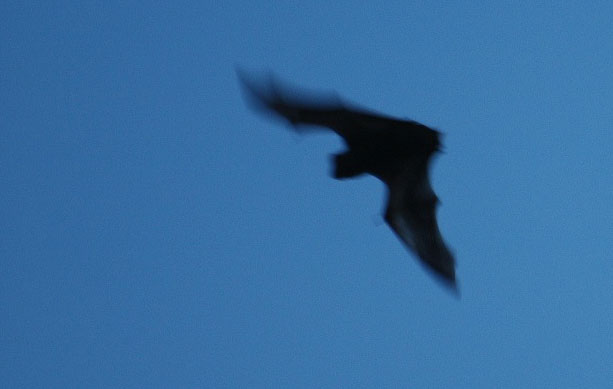
Hoary bats (Lasiurus cinereus) are among the largest North American bats with a wingspan up to 410 millimeters. The name comes from the "frosted, hoary" appearance of the dark fur tipped with silver or white. It is quite widespread, ranging from South America to the tundra of the Canadian arctic. Hoary bats are most common, seasonally, in the Southwest states.
They roost in tree cavities, woodpecker holes, and foliage, so are called a "tree bat." They can sometimes be heard uttering an audible chatter while flying.
These bats migrate through the Mojave Desert in May/June and again in August/September, their large winged forms seen flying at dusk along valleys and ridges. In southern Nevada they often fly along the Amargosa River, taking advantage of the abundant insects around the wet meadows and marshes.
Females may migrate ahead of males by a month, traveling in dispersed groups. They give birth to twins in May into July, often in the same roost tree year after year. Many winter in the warmer or more tropical areas of the continent, but a few overwinter in tree holes.
They will feed on mosquitoes. In New Mexico, Hoary bats feed on moths, especially Noctuids and Geometrids, as they fly along streams under the tree canopy. [From: Valdez, E.W. and P.M. Cryan. 2009. Food habits of the hoary bat (Lasiurus cinereus) during spring migration through New Mexico. Southwestern Naturalist 54(2): 195-200; and Bats of America, by Roger Barbour and Wayne Davis, 1969, University Press of Kentucky: Lexington]
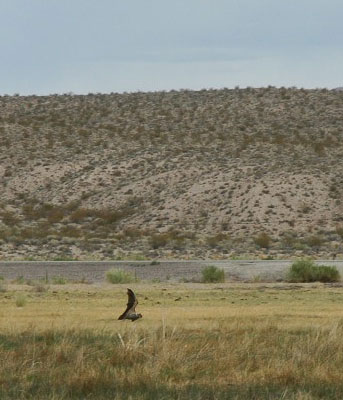
^We saw this Hoary bat flying in daylight during a cloudy afternoon along the Amargosa River in southern Nevada, in the fall.
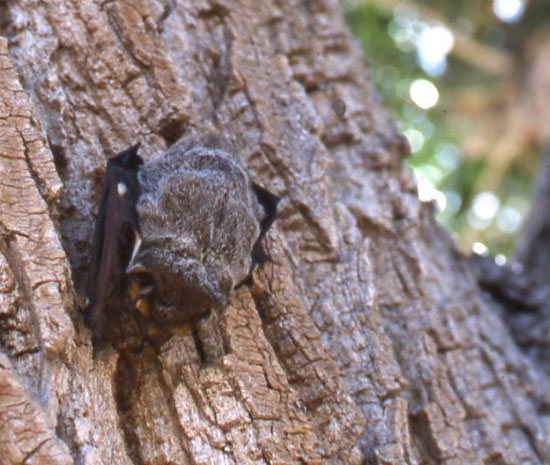
^Hoary bat clinging to a cottonwood trunk.
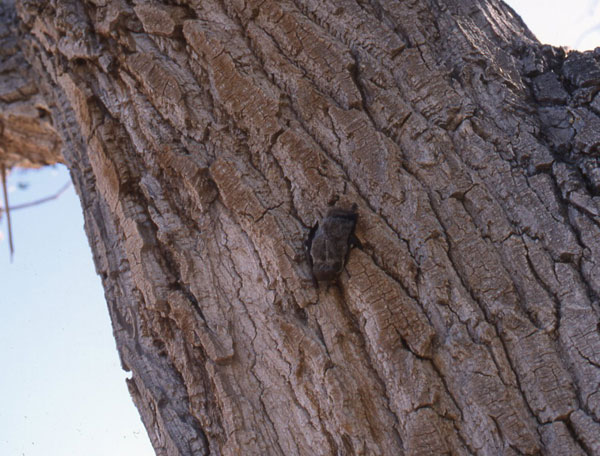
^Hoary bat on cottonwood tree.
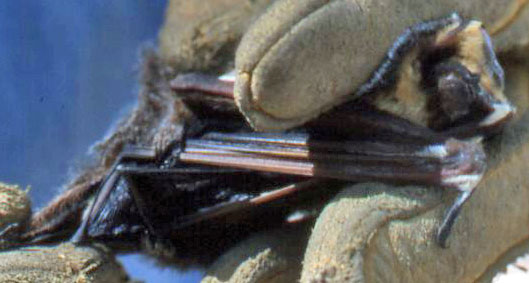
^A biologist handles a Hoary bat with thick gloves during a mist-net study at Torrance Ranch Nature Conservancy Preserve, Nye County, Nevada.
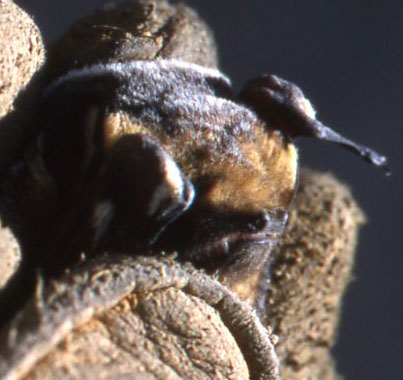
^The furry face of a Hoary bat. Its ears are short and the eyes were not visible.

^Large colorful striped wings.

^Hoary bats have beautiful grizzled fur.
Wind Turbine Mortality of Bats
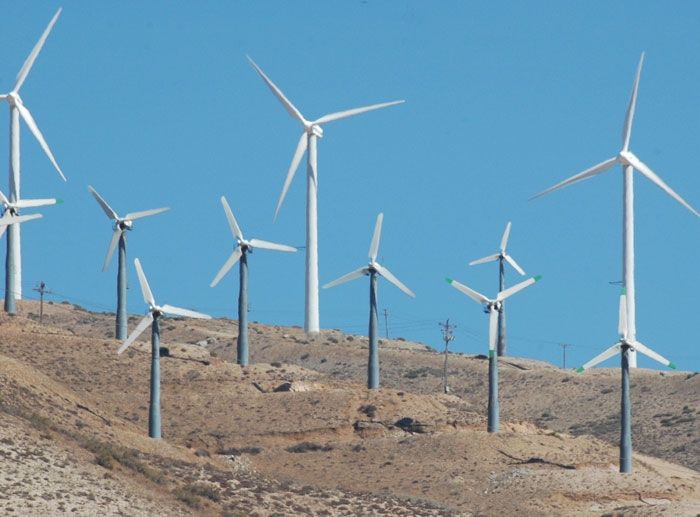
According to bat scientist Paul Cryan of the U.S. Geological Survey Fort Collins Science Center, Hoary bats are killed by wind turbines more than any other bat species. Silver-haired bats (Lasionycteris noctivagans) and free-tailed bats have also been among the most frequent kills at wind turbines.
"Dead bats are turning up beneath wind turbines all over the world. Bat fatalities have now been documented at nearly every wind facility in North America where adequate surveys for bats have been conducted, and several of these sites are estimated to cause the deaths of thousands of bats per year. This unanticipated and unprecedented problem for bats has moved to the forefront of conservation and management efforts directed toward this poorly understood group of mammals. The mystery of why bats die at turbine sites remains unsolved. Is it a simple case of flying in the wrong place at the wrong time? Are bats attracted to the spinning turbine blades? Why are so many bats colliding with turbines compared to their infrequent crashes with other tall, human-made structures?
"Although these questions remain unanswered, potential clues can be found in the patterns of fatalities. Foremost, the majority of bats killed by wind turbines are species that rely on trees as roosts throughout the year and migrate long distances; we call these species 'migratory tree bats.' Currently, migratory tree bats compose more than three quarters of the bat fatalities observed at wind energy sites. The other striking pattern is that the vast majority of bat fatalities at wind turbines occur during late summer and autumn. This seasonal peak in fatalities coincides with periods of both autumn migration and mating behavior of tree bats. Seasonal involvement of species with shared behaviors indicates that behavior plays a key role in the susceptibility of bats to wind turbines, and that migratory tree bats might actually be attracted to wind turbines."

^Silver-haired bats (Lasionycteris noctivagans) hanging on a cottonwood, southern Nevada desert riparian area along the Amargosa River.
Bats most affected by turbines are not widespread, but wide ranging, and have large seasonal movements. All probably concentrate in certain areas during migration periods.
Late summer and fall were found to be the worst times for bat mortality. Most fatalities occur on low-wind nights, and larger turbines kill more bats.
Indirect mortality also apparently occurs from loss of foraging habitat, loss of roosting habitat, and loss of migration corridors, but studies need to be done.
Bats appear to actually be attracted to tall wind turbines, possibly because they are placed in high wind corridors. Bats may also come to new clearings/linear features where insects gather. Bats may be attracted to noises or motion of turbine blades, and even try to roost on turbines. More research is needed.
If 2,158 megawatts (MW) of wind were built by the year 2020, then USGE estimates that 33,000 to 62,000 bats would be killed each year. This could include as many as 32,000 Hoary bats.
USGS recommends pre-construction monitoring in order to determine the presence and activities of bats, predict the probability and magnitude of bat fatalities, and correlate pre-construction bat presence and activity to post-construction impacts. Capture surveys,
acoustic monitoring, visual surveys, and RADAR are methods that can be used.
Post-construction monitoring should also be done to determine the number of fatalities.
This can be difficult, as dead bats (and birds) are often hard to find and disappear from scavenging animals.
USGS is beginning to consider mitigation measures where wind farms are built in bat habitat, in an attempt at reducing the number of bats killed. These can include:
• Operational changes, increasing blade “cut-in” speed (e.g., wind speeds > 6m/s), and shutting down under high-risk conditions or time periods.
• Deterrents, such as ultrasound blasters to scare bats away.
• Potential off-site mitigation, but Paul Cryan says this is not likely for tree bats.
(From: Overview of Issues Related to Bats and Wind Energy, by Dr. Paul Cryan, Research Biologist, USGS Fort Collins Science Center, Web Version of Presentation to the Wind Turbine Guidelines Advisory Committee, Technical Workshop & Federal Advisory Committee Meeting, Washington, D.C., 26 February 2008 Overview of Issues Related to
Bats and Wind Energy, at http://www.fort.usgs.gov/Products/Publications/22170/22170.pdf)
See the U.S. Geological Survey Fort Collins Science Center
Bats and Wind Energy Cooperative
HOME.....Mohave County Wind Project.....Searchlight Wind Project
